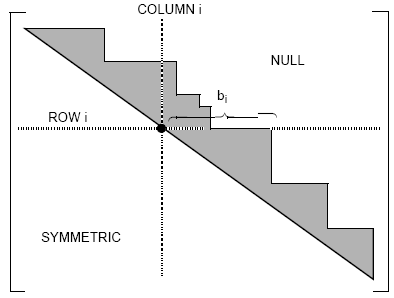XXXXXXXXXXXXXXXXXXXXXXXXXXXXXXXXXXXXXXXXXXXXXXXXXXXXXXXXXXXXXXXXXXXXXXXXXXXXXXXXXXXXXXXXXXXXXXXXXXXXXXXXXXXXXXXXXXXXXXXXXXXXXXXXXXXXXXXXXXXXXXXXXXXXXXXX''"> Introduction to Optimization
The purpose of optimization is to renumber the nodes or elements of a model in such a way that the stiffness matrix assembled in a finite element analysis can be solved (inverted) by using a minimum of CPU time, memory, and disk space.
The solvers, used by finite element codes, take advantage of the fact that the stiffness matrix is symmetric, banded, and sparse (see
Figure 10‑1). The cost (CPU time, memory, and disk space) of solving the matrix is determined by the
sparsity or zero-nonzero characteristics of the matrix. The sparsity is affected by the numbering of the nodes, or elements, depending on the solver. In general, the attributes of the matrix (see
Table 10‑1) are minimized when connected nodes or elements are numbered as close as possible to each othe
r.Prior to optimizing a model, complete all meshing operations. In addition, all coincident nodes should be merged (through Equivalencing) and the model boundaries verified. If the node or element definitions in the model are changed or modified after optimization, the model should be re-optimized.
Figure 10‑1 A Sparse, Symmetric Matrix
More Help:
Table 10‑1 Row Bandwidth | b i = bandwidth for row i. (See Figure 10‑1 for b i.) |
Matrix Bandwidth | The matrix bandwidth, B, is given by: B = max  . |
Matrix Profile | The matrix profile, P, is given by: P =  |
Active Column | A column j is an active column in row i if there is an entry in that column in any row with index k <=1. |
Row Wavefront | wi, the row wavefront for row i, is the number of active columns in row i. |
Matrix Wavefront | The matrix wavefront, W, is given by: W = max wi |
RMS Wavefront | The root mean square wavefront, W RMS, is given by: W RMS = ( 1⁄N)*  |

